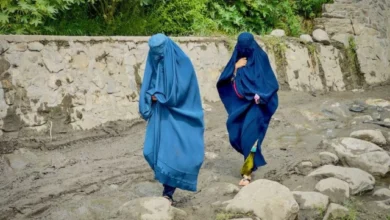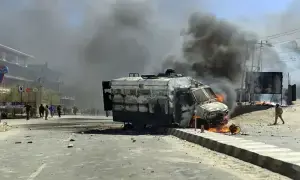Rs2.12 trillion proposed for armed forces

The government on Wednesday proposed an allocation of Rs2.12 trillion for the armed forces in the upcoming fiscal year (FY 2024-25), marking a substantial increase of 17.6pc compared to last year’s budget reflecting the country’s priorities in a region marked by geopolitical tensions.
The allocation for the armed forces in the next fiscal year is set at 1.7pc of GDP, maintaining the same proportion of the national pie as last year. Meanwhile, the proposed expenditure constitutes 12.33pc of the projected current expenses.
This significant boost in defence spending is the second-largest in six years, just shy of the 18pc hike granted by the PML-N government in the final year of its 2013-18 tenure. This also marks the second consecutive year of elevated funding for the armed forces, following last year’s 15pc increase, signalling a shift away from the traditional 11pc annual raise — a trend witnessed over the past decade.
The budget figures presented to the NA by the government reveal that the armed forces slightly exceeded their last year’s allocation of Rs1.8tr, ultimately spending Rs1.83tr.
The allocated amount, however, presents an incomplete picture of the country’s actual military expenditure. Notably, a significant sum of Rs662 billion, designated for retired military personnel, which equals to about 31pc of allocation for the armed forces, will not be drawn from the defence budget, rather government’s current expenditure.
Allocation reflects 17.6pc increase compared to last year’s defence budget
Major military acquisitions and funding for nuclear weapons and missile programmes are believed to be financed through separate channels, hidden under a classified budget line. The true extent of military spending, therefore, remains obscured.
Service-wise share
The share of the three services and inter-services organisations has remained fairly consistent since 2019, with Army getting 47.5pc, Pakistan Air Force 21.3pc, Navy 10.8pc and inter-services organisations 20.3pc of the allocation.
Notably, this year’s budget exhibited a unique pattern, where all branches of the military — the Army, PAF, PN and inter-services organisations — will receive an equal percentage increase of 22.3pc in their respective allocations, a rare display of parity in funding distribution.
![ .]https://www.dawn.com/news/1839591)
The allocation is functionally divided into four categories: ‘Employees Related Expenses’, covering salaries and allowances for servicemen; ‘Operating Expenses’, which include costs for transportation, fuel, rations, medical treatment, training, and other essential services; ‘Physical Assets’, which funds the procurement of arms, ammunition, and related equipment through local purchases and imports; and ‘Civil Works’ dedicated to maintaining existing infrastructure and financing new construction projects.
The largest increase in the defence budget for FY 2024-25 has been observed in the civil works category, which has been allocated Rs244.8bn, marking a 25pc increase. This is followed by physical assets, which received Rs548.6bn (an 18.8pc increase), and operating expenses, which were allocated Rs513.3bn (a 15.6pc increase).
Despite these increases, employee-related expenses continue to constitute the largest chunk of the budget for the armed forces, accounting for 39pc. Physical assets and operating expenses claim 25.8pc and 25pc of the defence budget, respectively, while civil works accounts for 11.5pc. It is noteworthy that while the proportions allocated to physical assets and civil works have varied slightly over the years, the shares designated for employee-related expenses and operating expenses have shown a consistent upward trend.
Despite the absence of active conflict with India in recent years, the country perceives a persistent threat from its eastern neighbour, but a more pressing challenge has emerged from cross-border militancy originating from Afghanistan, exacerbated by rising internal militancy driven by the Tehreek-i-Taliban Pakistan and the insurgency in Balochistan.
Securing its porous borders with Iran is also critical to combating drug and weapons trafficking, as well as militant movements. Internally, Pakistan faces threats from insurgent groups like the TTP, responsible for numerous attacks throughout the country. Moreover, ensuring the security of Chinese investments, particularly those under CPEC, is a high priority, given the strategic economic and political implications of recurring attacks on Chinese nationals and projects, which could jeopardise Pakistan’s vital relationship with China.



